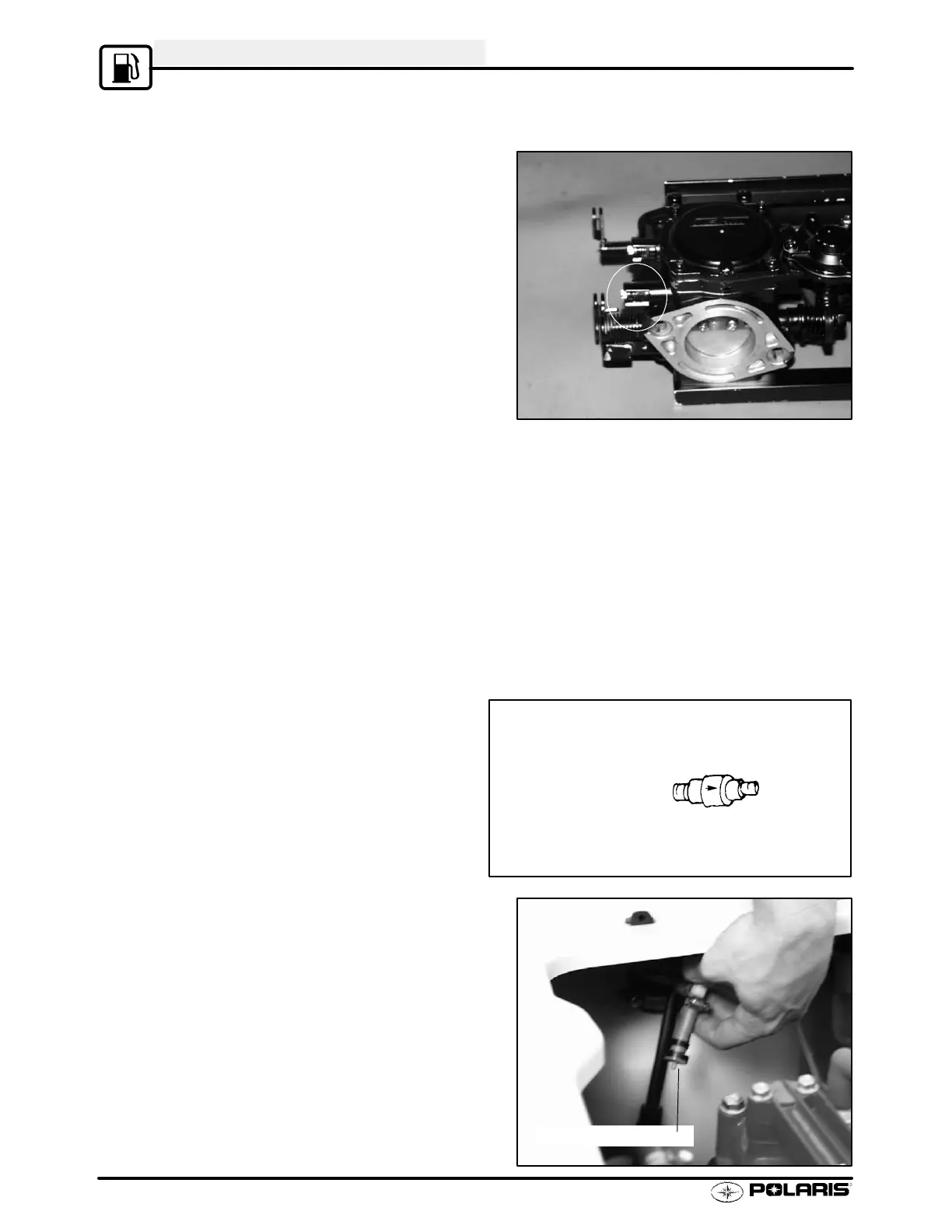Fuel / Exhaust
4.34
Mixture Screw Adju stment an d Tuning
1. The low speed mixture screw is located
lowermost on carburetor. Remove limiter cap
(pull outward).
2. With craft in the water or test tank, adjust idle
speed to specifications (see procedure this
section).
3. Start engine, let it idle for one minute to normalize
engine temperature. Rev engine slightly for 10-20
seconds and return to idle.
4. T urn each mixture screw to obtain highest idle
RPM.
5. T urn each screw out approximately 1/4 turn from
this point. Fine tune to achieve best throttle
response.
Fuel Tank Vent Operation
The fuel tank vent system consists of an inlet check valve and a pressure relief valve. The inlet check valve allows
air to enter the tank as the fuel supply is being used. The pressure relief valve maintains a 1-1.5 PSI positive
pressure in the fuel tank. If pressure in the tank exceeds 1.5 PSI, the valve releases and excess pressure is al-
lowed to escape.
Inspection
The check valves can be tested for proper operation by applying pressure to one end with the Mity Vact. Apply
approximately 5 PSI to the end of the valve marked VAC. The valve should hold steady pressure. Try to apply
pressure to the other end of the valve, it should allow air to go through easily with no pressure build up. Replace
the check valve if found to be faulty.
Relief Valve Testing
Apply air pressure with a Mity Vact to relief valve.
With air pressure applied in the direction of the ar-
row, the valve should “pop” between 1.0 and 1.5
PSI. In the opposite direction it should hold pres-
sure.
Fuel Tank Check Valve Testing
To test the air inlet check valve, remove the valve
and apply approximately 5 PSI pressure to the end
of the valve marked VAC. The valve should hold
steady pressure. Connect the tester to the other
end and apply pressure. Air should pass through
the valve with no pressure build up. Replace the
check valve if it holds pressure both ways or fails
to hold pressure one way.
Relief Valve
Apply 1 - 1.5 PSI
Air Inlet Check Valve

